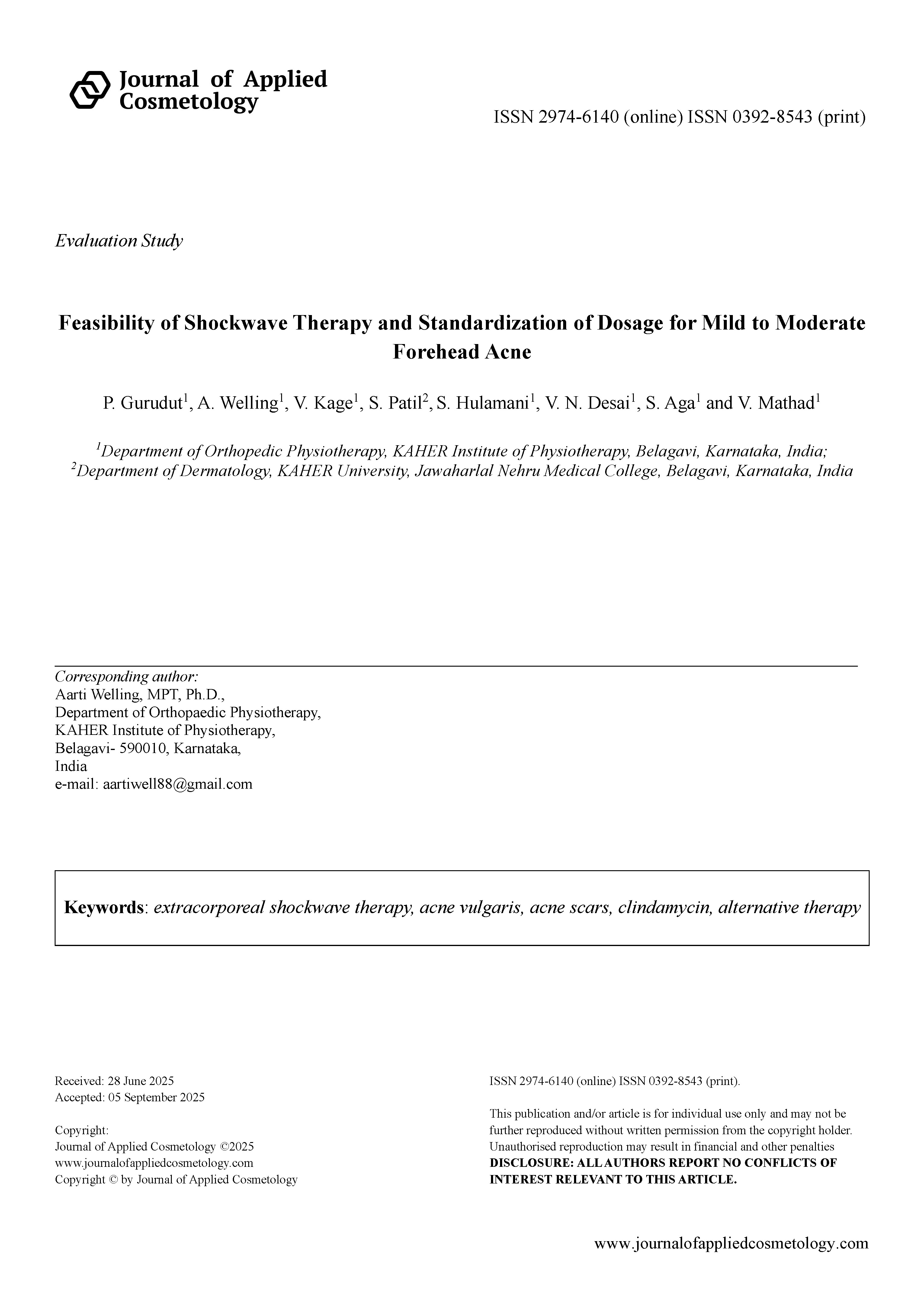Feasibility of Shockwave Therapy and Standardization of Dosage for Mild to Moderate Forehead Acne
Keywords:
Extracorporeal Shockwave Therapy, Acne vulgaris, acne scar, Clindamycin, Alternative therapyAbstract
Acne vulgaris, the most common dermatological condition globally, has a reported prevalence of 0.74% in India. Topical clindamycin remains a first-line treatment, particularly for acne scars. Recent evidence suggests extracorporeal shockwave therapy (ESWT) may support a favorable environment for treating active acne and post-acne scarring. However, limited data exist on the combined use of ESWT and clindamycin in the management of acne. This study aimed to assess the efficacy of ESWT, both alone and as an adjunct to clindamycin, in reducing acne severity, lesion count, and enhancing quality of life and patient satisfaction. It also aimed to determine the optimal ESWT dosage for achieving therapeutic benefits. To evaluate the efficacy of ESWT in mild to moderate papular forehead acne based on acne severity, number of lesions, quality of life, and patients’ satisfaction, and to determine the most effective ESWT dosage, thirty individuals were screened, with 24 participants (aged 12–29 years) meeting the inclusion criteria. They were randomly divided into three groups based on ESWT dosage: Group A (200 impulses), Group B (300 impulses), and Group C (400 impulses). Each participant received three ESWT sessions, administered on alternate days over a one-week period, along with topical clindamycin. Outcomes were assessed at baseline and post-intervention using the Investigator’s Global Assessment (IGA), Acne-QoL questionnaire, lesion photography, and Patient Satisfaction Scale. Paired t-tests revealed significant Intra-group improvements (p = 0.001) in all outcome measures. One-way ANOVA indicated significant inter-group differences in post-intervention acne severity (p = 0.035) and lesion count (p = 0.005), with Group B exhibiting the greatest improvement. No significant intergroup differences were observed for quality of life (p = 0.170) or patient satisfaction (p = 0.116). ESWT, particularly at moderate dosage (300 impulses), is effective and safe in treating forehead acne. When combined with clindamycin, it improves the severity of acne and supports overall patient outcomes.
Downloads









